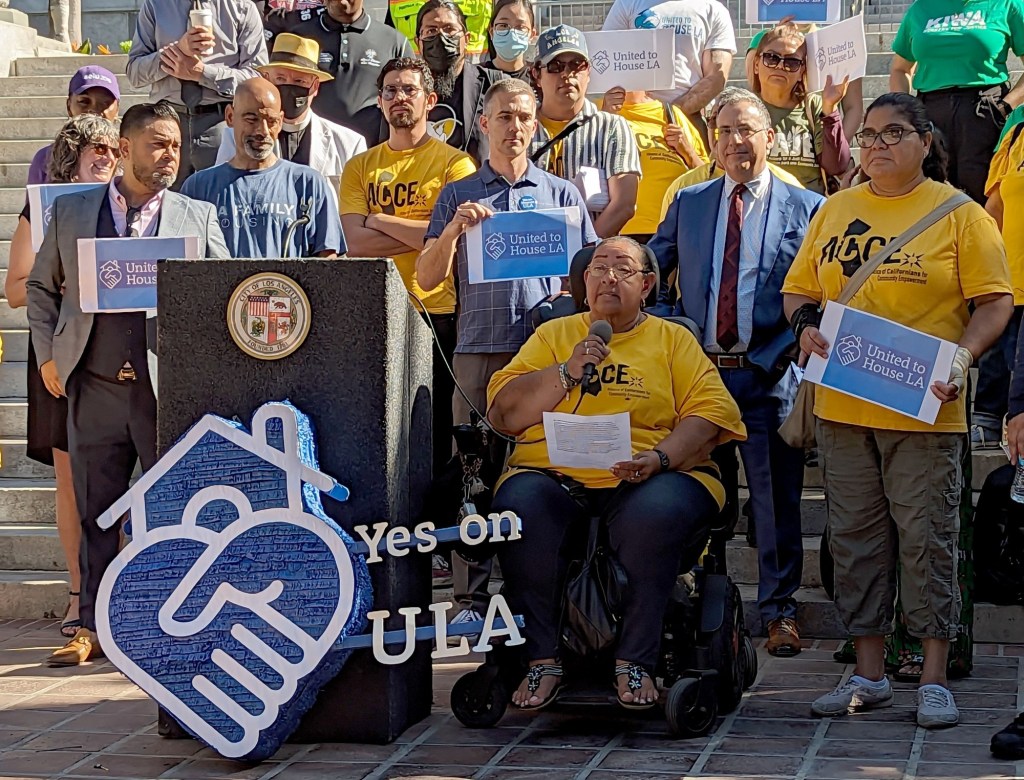
Property owners outside the city of Los Angeles may not be that familiar with the Measure ULA tax, but they should be prepared to get up to speed. Bad ideas spread quickly in California and ULA’s punishing real estate transfer tax is no exception. Deceptively sold to voters as a “mansion tax,” proponents didn’t limit it to high value homes. The sale of virtually every income-producing property, including new affordable housing projects, is also subject to the tax.
ULA imposes a 4% tax on sales and transfers of real property valued over $5 million, and a 5.5% tax on those over $10 million. When it passed, the city expected a flood of new revenue to address its well-documented homelessness crisis. Proponents of the measure estimated that ULA would raise $600 million to $1.1 billion annually. However, the tax take has fallen far short of projections, bringing in just $173.6 million in its first year.
A study released last week by the UCLA Lewis Center For Regional Policy Studies confirmed much of what critics of the tax have been saying since its enactment two years ago this month. In the campaign leading up to vote, opponents of ULA argued that the label “mansion tax” was intentionally deceptive, that it would wreak havoc on the city’s real estate market, that it would generate far less revenue than projected, and that it would have a host of other unintended consequences.
Sure enough, the UCLA study, entitled “The Unintended Consequences of Measure ULA,” confirmed all of the above. The following is a portion of the study’s abstract:
“We present evidence suggesting that Measure ULA has reduced higher-end real estate transactions in Los Angeles. Since Measure ULA was enacted, the odds of a Los Angeles property selling at a price above its tax threshold have fallen by as much as 50%. In raw terms, this sharp decline occurred across all types of properties, but our strongest evidence suggests it was particularly pronounced for non-single-family transactions, which fell by 30-50%. Together the evidence suggests that Measure ULA is neither a true “Mansion Tax,” nor a tax that falls solely on unearned property wealth. The tax does fall on mansions, but it also impedes the trade in commercial, industrial and multifamily property. In doing so it jeopardizes L.A.’s ability to build new housing, revitalize struggling commercial and industrial properties, and raise property tax revenue. All these processes rely on property turnover, and in particular the turnover of higher-priced, non-single family parcels. A tax that reduces this turnover will undermine property tax revenues inside and outside L.A., obstruct local and regional housing production, and slow local revitalization efforts. Thus, while Measure ULA has generated visible, substantial and much-needed revenues for affordable housing in Los Angeles, it has also, less visibly, had consequences that reduce both housing affordability and fiscal health.”
Although the thorough analysis of the negative impacts of the ULA tax deserves praise, the study presents proposed solutions that are both ill-founded and potentially dangerous to homeowners.
For example, the study contends that “The simplest reform would be to exempt from Measure ULA any property that isn’t single-family residential. This would, in one fell swoop, turn Measure ULA into the tax many voters thought they were getting: a tax on mansions.” But this “reform” would place the entire burden of generating ULA revenue on homeowners. Granted, the value threshold is high, but two factors threaten more modest homes. First, if commercial property is exempt, ULA proponents would likely seek to lower the threshold to hit homes of lesser value to meet their revenue targets. Second, even without any change in the law, ever increasing home values due to inflation and other factors would put ordinary homeowners at risk.
A second proposed fix is only slightly less offensive to homeowners. The study states that, “Another straightforward fix would involve exempting any transaction where the property has been reassessed relatively recently. With this reform, ULA would apply only to properties that had not been reassessed in the previous (for example) 20 years.” But because homeowners tend to hold onto their properties for longer periods of time than other categories of property owners, this could, again, shift the burden in an unfair manner.
The plain language of Proposition 13 expressly prohibits local governments from imposing a “transaction tax or sales tax on the sale of real property” and the Howard Jarvis Taxpayers Association is currently challenging the validity of the ULA tax.
A second method of removing the tax from the books is for all segments of the real estate community – homeowners, commercial interests, and apartment owners – to band together to propose outright repeal through a new citizens’ initiative. Given the “unintended consequences” flowing from ULA, that could very well prove to be more attractive to voters than political professionals might think.
Jon Coupal is president of the Howard Jarvis Taxpayers Association.
Originally Published:



